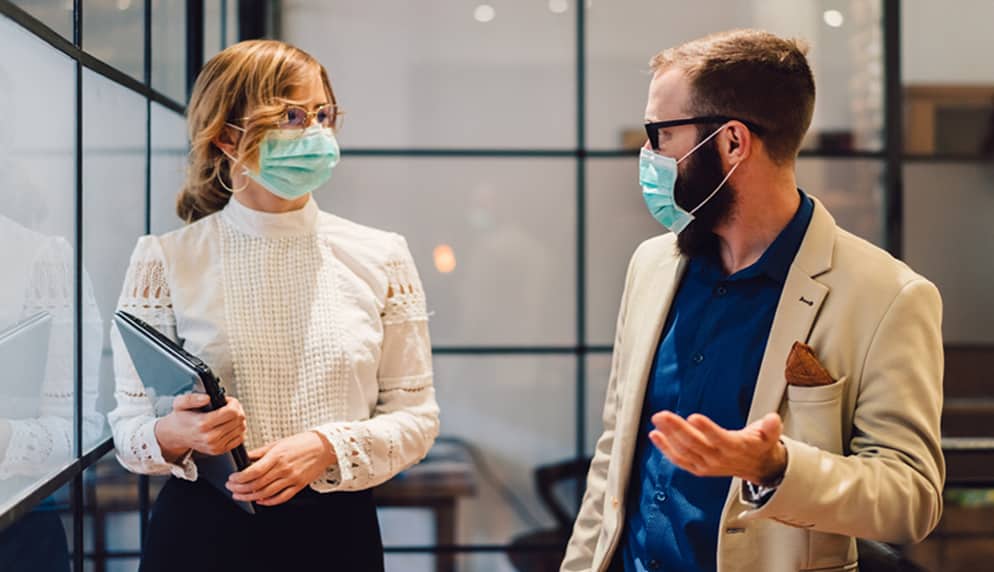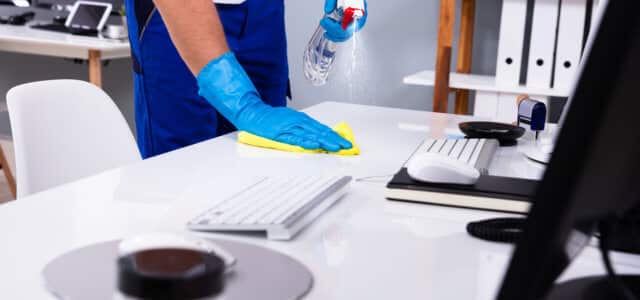The economy is restarting and some business doors are already open. Officer workers, health officials, and even politicians are slowly going back to work but with repercussions.
The new normal is paving a way to a different kind of workplace dynamics. These are important in order to reduce the spreading or getting infections in the workplace. Here are some essential measures for employees and employers before starting working in the new normal.
Understanding How COVID-19 Spreads
Yes, we read and hear these repeatedly, but it really won’t hurt us if we share it again here. Covid-19 spreads in the following methods:
- Direct contact with an infected person
- When infected respiratory droplets from sneezing, coughing or talking fall to a surface, another person touches the said surface.
- Infected respiratory droplets called aerosol stay suspended in the air, and another person can inhale this.
- Human feces can also carry the virus.
Considering that these transmission methods are standard in the workplace, employers must then follow the best practices to ensure that the workplace is safe.
Safe Steps in the Workplace
Protect others by wearing a face mask in the workplace. We always have to assume that we are asymptomatic and we don’t want other people to get infected. What we do to keep other people safe is by practicing physical distancing in the workplace and wearing a mask at all times.
Employers can also arrange a work shift or alternate workday. This is to ensure that proper physical distance is practiced within the workplace.
Sanitize Every Corner
Workplaces should be sanitized from top to bottom, including door handles, elevator buttons, coffee, and water machines, and even floors.
Employees can help sanitize their areas but employers should take full responsibility for creating a safe workplace for employees, so they need to do most of the job.
It’s also critical to adhere to new bathroom protocols. These include the following:
- Leaving the exhaust fan running after using the bathroom.
- Close the lid of the toilet when flushing.
- Don’t use the bathroom after someone else’s had used it. Aerosols stay suspended for at least 30 minutes, so ensure that the toilet is disinfected if used by another person immediately.
- Wash your hands properly right after using the bathroom.
Workplace Filtration and Ventilation
Coronavirus can be spread through the air as it can be suspended. Airborne transmission is happening, and the aerosol can go as far as six feet. This is the reason why the WHO and CDC advise physical distancing in public spaces, including the workplace.
With this, employers are advised to install high-grade filters and ventilation. Companies can simply upgrade these or install high-grade air conditioning systems. Such methods help mitigate risks in the workplace and, even though there is still no direct scientific proof for this, reduced exposure because of the filters will go a long way.
Employees may also protect themselves but purchasing their portable air purifiers. These can remove germs in the environment. Some experts also believe that these can help mitigate the spread of coronavirus in the air.
Other Preventive Measures
Modifications in the workplace are critical to ensure the safety of everyone. These include the following:
- Employers must also encourage their employees to stay at home if they feel sick, especially with respiratory-related illnesses.
- Person-to-person communication guidelines must also be implemented in the workplace, including respiratory etiquette, such as covering one’s mouth or nose when coughing or sneezing.
- The use of appropriate trash receptacles must be placed in the workplace.
- Administrative controls must also be followed in the workplace, including discontinuing non-essential business travels, putting emergency communication plans in place, and training employees on how to use PPE for appropriate industries.
These are just recommendations to minimize workplace contamination risks. Employees and employers must do their part to apply the safety protocols in the workplace.


